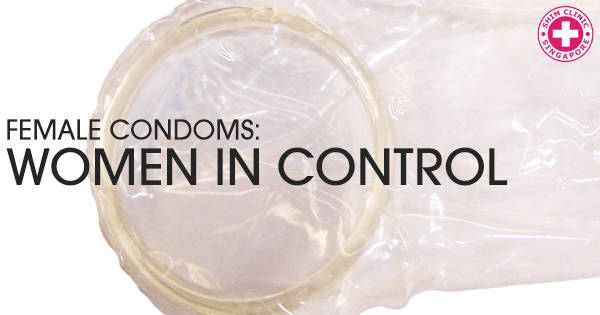Most people are familiar with the male condom. Its use is outlined in sex education classes and mentioned extensively in movies, TV, and other popular media. Less well known is the female condom, a barrier method of contraception and STD protection.
What is it?
The female condom is a pre-lubricated polyethylene sheath that is inserted into the vagina or anus prior to coitus. It forms a tube with a closed rubber circle at one end and an open ring at the other. The tube is inserted into the vagina or anus with a finger, similar to a tampon. The open ring is left hanging about 1cm outside of the vagina.
Advantages
The advantages of the female condom are that it does not need to be inserted during sex, indeed it is safe to put it in place up to eight hours previous, and so not disrupting the mood. It also does not need to be immediately removed allowing the intimacy to continue post-coitus. The looser fit of the female condom means it does not inhibit erection or reduce sensitivity as the tighter male condoms can. They are a good choice for those with a latex allergy or sensitive skin.
Disadvantages
The disadvantages are a slight increase in cost, possible rustling noises during coitus (this can be reduced with extra lube) and slipping during sex. If incorrectly used it can slip inside the vagina during sex and the loose entrance ring can be missed, allowing the penis to move between the wall of the vagina and the condom instead of inside. It is not as effective as a male condom in preventing pregnancy with a 95% success rate if used correctly, vs 98% for the male, and down to 79% if incorrectly used.
Buying them
Female condoms are not commonly available in stores and need to be ordered online. If used correctly they protect against STDs as effectively as the male condoms. It is a matter of personal preference as to whether male or female condoms suit you best. Difficulties may arise in the first few attempts so it is worth practicing prior to use or using with a trusted partner you know to be safe for the first attempts.
Remember that no form of protection is 100% safe and the best protection is abstinence or a faithful monogamous relationship. In cases where you found that the condom has been damaged during or after intercourse, you may want to consider going on HIV PEP medication if either you or partner have been known to engage in risky sexual behavior. HIV PEP will help to stop HIV infection within 72 hours of exposure.
Find out more about HIV PEP here: https://www.shimclinic.com/singapore/hiv-pep
Find out more about our STD Clinic here: https://www.shimclinic.com/singapore/std

